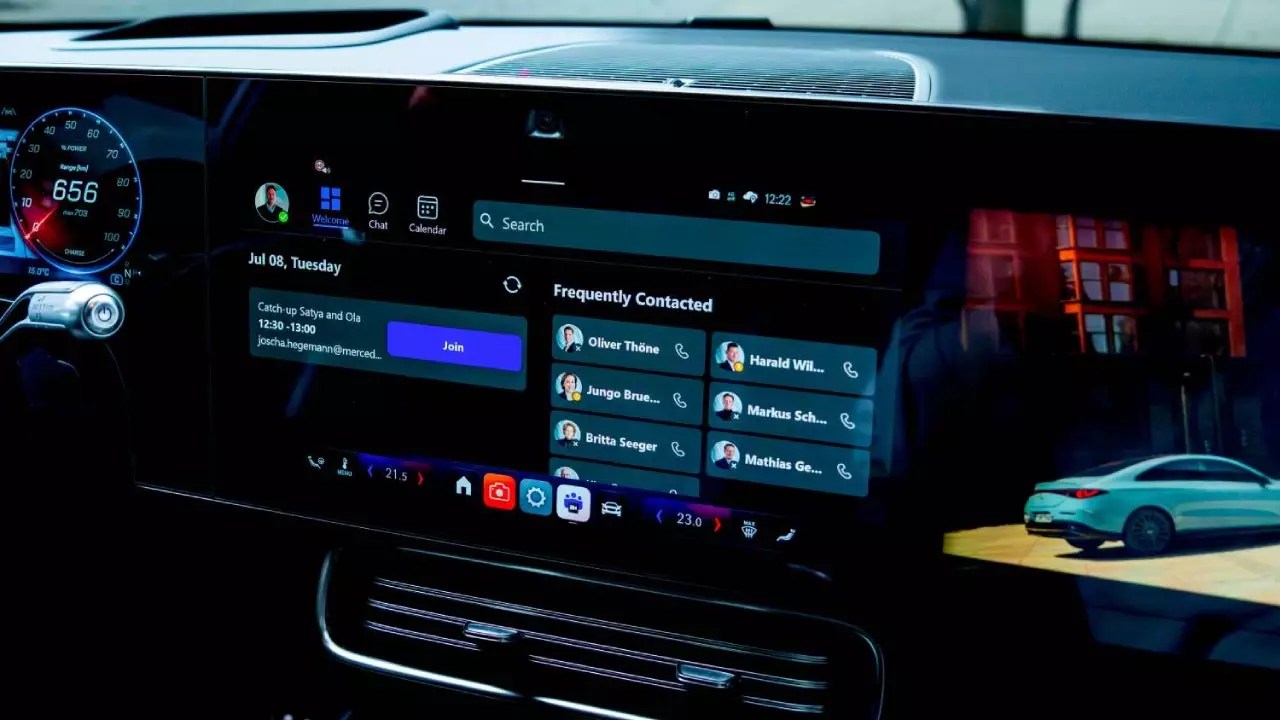Mercedes-Benz continues to push the boundaries of automotive innovation, highlighting a desire to blend luxury, technology, and practicality seamlessly. Their latest update to in-car Teams integration symbolizes an audacious step toward transforming the modern work environment. Rather than simply upgrading the vehicle, Mercedes seeks to redefine how professionals work and showcase their productivity, even behind the wheel. The integration of live video streams during drives, although seemingly superficial at first glance, suggests a deeper shift in corporate culture—one that values constant connectivity and image-building over safety concerns. It raises questions about what truly constitutes professionalism and how far comfort and tech can be pushed before core safety considerations are compromised.
While the company emphasizes safety and legal compliance, the real intent appears driven by a desire for visibility and status. In a world where being perceived as busy and dedicated is becoming almost a competitive sport, allowing drivers to broadcast their presence during meetings blurs the lines between work commitment and personal safety. In this ultra-connected era, product evolution isn’t just about convenience; it’s about establishing dominance in the luxury tech landscape, no matter the risks involved.
Safety or Spectacle? The Perplexing Logic of Video in Motion
The core issue with Mercedes’ new feature—and perhaps its most controversial—is the notion of legal and safety compliance coexisting with the live streaming of a driver’s face while in motion. Mercedes assures us that the system is designed to minimize distraction, automatically disabling video feeds from other participants and restricting drivers to audio-only interaction when the vehicle is moving. This so-called safety feature, however, does little to reassure critics and safety skeptics alike.
The paradox lies in the purpose of the feature: why would a driver need to be on camera while driving? Is it to project professionalism, showcase a work-life blend, or simply to fulfill an aesthetic desire to appear “connected”? The potential for misuse or accidental exposure is not merely hypothetical but practically unavoidable. Minor distractions, such as nasal explorations or fidgeting, could become public displays, while more serious incidents might be live-streamed involuntarily, creating unintended and potentially damaging consequences.
This blurred boundary between productivity and privacy exposes a fundamental flaw in prioritizing image over safety. It is difficult to see how a feature that encourages visual engagement during movement can be justified, even if content is limited solely to the driver. The rationale that “the driver won’t see other attendees” doesn’t address the core concern—what about other drivers or pedestrians who might observe the screen or camera feed? The long-term implications of normalizing such behavior could fundamentally alter perceptions of safety and professionalism on the road.
Innovation or Overreach? The Strategic Value of AI and Connectivity
Beyond the questionable utility of in-car video during drives, Mercedes’ integration of generative AI—via Microsoft 365 Copilot—is a more compelling facet of this update. This marks an important milestone: bringing sophisticated AI features into the realm of personal transport. The promise of AI that can summarize emails, provide quick data insights, and manage scheduling hands-free while driving presents a tantalizing vision of the future of connected mobility.
However, this also raises critical questions about dependency and reliability. Relying on AI for such nuanced tasks in real-time, safety-critical contexts is inherently risky. AI systems are not infallible, and their errors could have serious consequences when decisions are made on the fly in a moving vehicle. While the convenience of voice prompts and seamless calendar integration can improve productivity, it also risks fostering inattentiveness, with drivers potentially splitting focus between the road and the digital realm.
By positioning itself as a pioneer in combining luxury, AI, and communication, Mercedes is clearly targeting an elite demographic eager to showcase their efficiency and technological savvy. Yet, this push toward ubiquitous connectivity might inadvertently distort priorities—shifting focus from safety to spectacle, and from cautious driving to digital multitasking. As the technology matures, it remains uncertain whether these innovations will enhance the driving experience or simply commodify risk-taking and status display.
The Future of Automotive Innovation—A Double-Edged Sword
Mercedes’ latest technological endeavors encapsulate an ongoing dilemma in the automotive industry: how much innovation is too much when safety is at stake? While the allure of having in-car video streaming and advanced AI might appeal to early adopters and status-conscious consumers, the broader implications are more concerning. Are we edging closer to a future where the vehicle becomes merely a mobile office or television studio, rather than a machine designed primarily for safe transportation?
Industry leaders must recognize that technological progress should not come at the expense of fundamental safety principles. The luxury brand’s bold steps reflect a willingness to lead, but also a recklessness that could set dangerous precedents. Automakers, regulators, and consumers all bear responsibility for ensuring that innovation remains aligned with the primary goal of protecting lives. Moving forward, the challenge will be to balance cutting-edge features with the irrefutable need for caution, and to question whether the desire for visibility and productivity warrants the risks being embraced today.


Leave a Reply